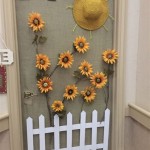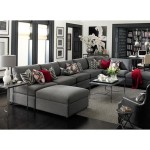How to Decorate a Child's Room on a Budget
Transforming a child's room into a haven of imagination and joy doesn't require a hefty budget. With creativity and a little resourcefulness, parents can create a space that is both stylish and functional, without breaking the bank. This article provides a comprehensive guide to decorating a child's room on a budget, outlining various strategies and tips for achieving a delightful and inspiring environment.
1. Embrace Thrift Stores and Secondhand Markets
Thrift stores and secondhand markets are treasure troves for budget-conscious decorators. From furniture to decor, these outlets offer an abundance of affordable and unique items. Look for gently used furniture pieces, such as beds, dressers, and bookshelves, that can be refinished or repurposed to suit the child's preferences. Additionally, decorative items like lamps, rugs, and wall art can be found at bargain prices, allowing you to add personality and style to the room without draining your budget.
2. Unleash the Power of DIY Projects
Do-it-yourself projects are a fantastic way to add a personal touch and save money. Consider creating your own wall art by framing prints, photographs, or even children's artwork. Upcycle old furniture with paint, fabric, or wallpaper to give it a fresh look. Fabric scraps can be transformed into curtains, cushions, or even wall hangings. Embracing DIY projects not only minimizes expenses but also allows you to express your creativity and personalize the room in a way that reflects your child's individuality.
3. Utilize Free or Low-Cost Resources
There are numerous free or low-cost resources available for decorating a child's room. Explore online platforms for free printable wall art and patterns. Utilize recycled materials to create unique decor, such as turning empty jars into pencil holders or using old magazines to create a collage. Incorporate natural elements, such as branches, stones, or seashells, to add a touch of nature and texture to the space. These resourceful techniques can significantly reduce costs and enhance the charm of the room.
4. Paint is Your Best Friend
A fresh coat of paint can dramatically transform a room's appearance, making it feel bright and inviting. Choose a color palette that aligns with the child's personality and interests, incorporating vibrant hues or neutral tones. Consider creating an accent wall with a bold color or pattern to create a focal point. Additionally, painting furniture pieces in coordinating colors can create a cohesive and stylish look without the need for replacing them entirely.
5. Prioritize Functionality and Storage
A well-organized and functional room is essential for a child's development and well-being. Prioritize storage solutions that are both practical and aesthetically pleasing. Utilize open shelves for displaying books and toys, while utilizing baskets, bins, and drawers to keep the room tidy. A dedicated play area with a designated space for toys and games promotes organized play and makes it easier for children to put things away.
6. Incorporate Personal Touches
No child's room is complete without personal touches that reflect their unique interests and personality. Encourage your child to participate in the decorating process by allowing them to choose colors, themes, and accents. Incorporate their artwork, photos, and favorite toys into the design to make the room truly their own. These small gestures create a sense of ownership and pride, making the room a cherished space that fosters creativity and individuality.
7. Embrace Simplicity and Minimalism
A cluttered room can be overwhelming and disruptive for a child's focus and well-being. Embrace a minimalist approach by focusing on essential furniture and decor items. This approach promotes a sense of calm and order, allowing the child to relax and enjoy their space. Consider creating a small, dedicated play area where toys can be kept organized and easily accessed.
8. Embrace Growth and Change
Children grow and change rapidly, and their interests and preferences evolve over time. It's important to embrace this natural evolution and create a room that can adapt to their changing needs. Opt for furniture and decor that are versatile and can be easily reconfigured as their tastes develop. This approach ensures that the room remains engaging and relevant throughout their childhood.
9. Utilize Online Resources and Inspiration
The internet is a wealth of inspiration and resources for decorating a child's room on a budget. Utilize websites, blogs, and social media platforms to discover creative ideas and budget-friendly solutions. Explore DIY tutorials and find inspiration from real-life examples. Online platforms offer a wide range of ideas that can spark your creativity and help you create a room that meets your child's unique needs.
10. Prioritize Quality Over Quantity
When decorating on a budget, prioritize quality over quantity. Choose durable and long-lasting furniture and decor items that can withstand the rigors of childhood. Invest in timeless pieces that can be easily adapted to different styles and preferences as your child grows. By focusing on quality, you create a room that will stand the test of time and provide a beautiful and functional space for your child to thrive.

Top 5 Decorating Tips For Kids Room On A Budget Memories Of Growing Up
6 Easy Decor Ideas To Update A Child S Bedroom On Budget Melanie Lissack Interiors

7 Budget Ideas For Designing Your Child S Small Bedroom Homify


5 Ways To Redo Your Child S Bedroom On A Budget

Budget Friendly Decor Ideas To Add Color Your Child S Room Nanny Mommy

How To Decorate Your Kids Bedrooms For On A Budget Practical Perfection


How To Decorate Your Child S Bedroom On A Budget Diy Tips

7 Playroom Ideas On A Budget Must Haves For Fun Space
Related Posts







